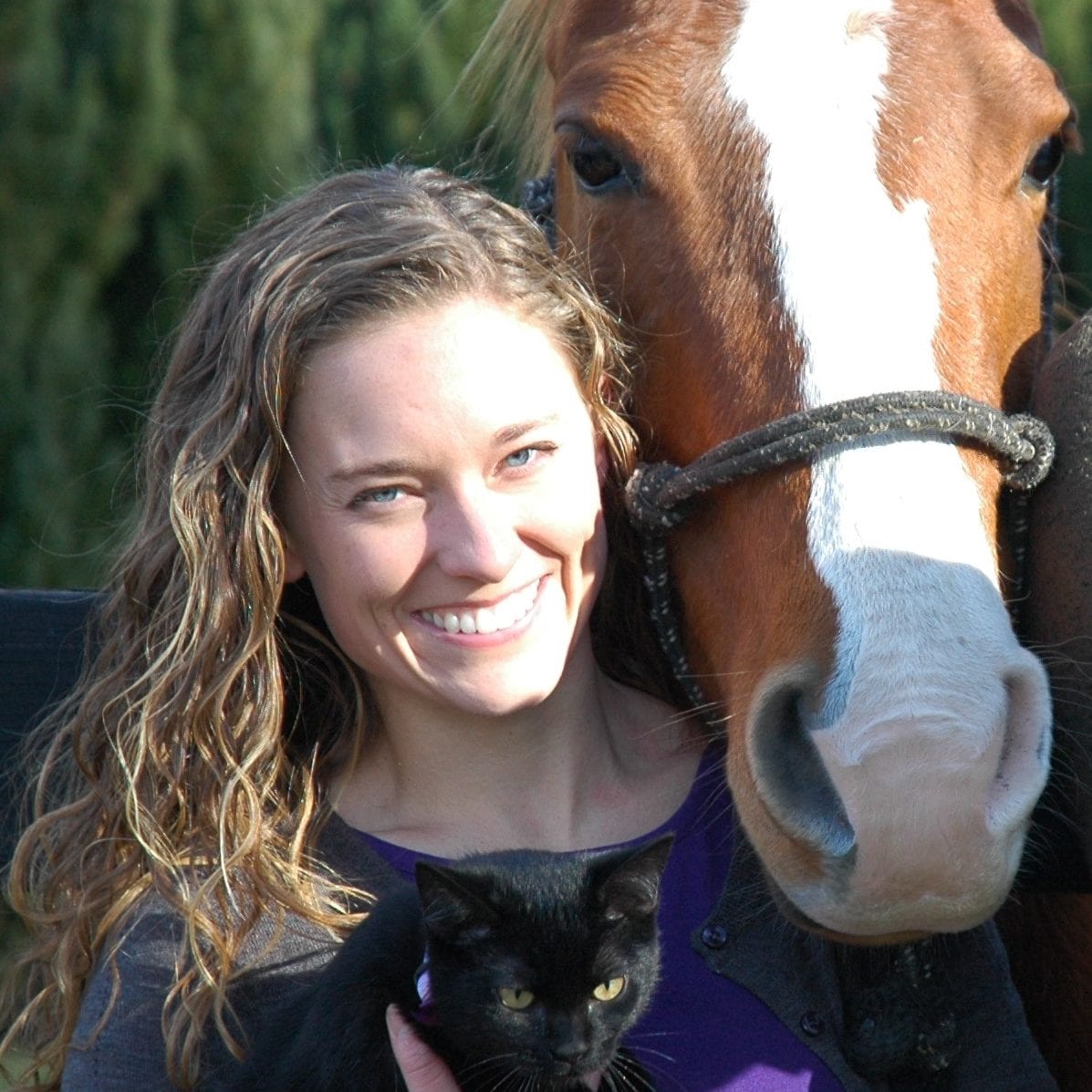Cognitive Development Lab at Lehigh University
Our Research
How do babies and kids think about the complex world of people, objects, animals, and events? Do they understand the world solely through what is available on the surface—what is observable, concrete, and obvious—or do they look beyond the surface to reason about deeper, hidden constructs?
Our research explores how young children move beyond what is perceptually available and reason about the non-obvious. We address this central theme through two distinct, but related lines of work. In particular, (1) how do infants and children understand the social world, and (2) how do they organize their knowledge about the world into categories?
In particular, our studies explore when infants develop an understanding of human behavior as motivated by intentions, thoughts, and beliefs. In these studies, babies watch sequences of simple human actions (for example, a person reaching over a barrier for a ball or searching for an object in a box) presented on a computer monitor. Using a computer program, we measure where infants are looking and how long they look at the actions. These data help us understand what infants think about people’s actions and mental states.
We are also investigating how an understanding of mental states develops by examining how performance on the above tasks is related to experiences in babies’ everyday lives. In particular, we are interested in how infants’ emerging motor and social abilities (for example, walking and crawling, pointing and following the direction of another person’s point, imitating others’ actions) may contribute to an understanding of others. These skills and experiences will be assessed through parent questionnaires and/or observations of parent-child interactions in the lab.
Child development research has shown that even babies show some awareness of the thoughts and goals that motivate others’ actions. However, both the understanding of others’ mental states and the ability to use that understanding in social interactions continues to mature and change throughout the preschool, elementary, and middle school years.
In our research, we are interested in how children think about the minds of others and how they apply that understanding to navigate the social world. Our studies also explore how these abilities develop with age and the extent to which they differ among children of the same age.
To investigate children’s thinking about categories, some of our studies also explore children’s use and comprehension of generic language. Generic language is language that refers to categories (for example, “Stoves are hot”, “Birds lay eggs”). In contrast, non-generic language is language that refers to a limited set of category members (for example, “The stove is hot”, “Those birds lay eggs”). For example, the generic “Birds lay eggs” makes a claim about the category of birds. Generics express broad generalizations about shared properties of category members. Previous research has shown that generics appear frequently in natural speech and provide an important means of conveying information about categories. In our research, we examine how children use and interpret generic language and what this can tell us about their reasoning about categories.
Our Team

Amanda Brandone, Ph.D.
Principal Investigator
I am an Associate Professor in the Psychology Department at Lehigh University. I joined the Lehigh faculty in 2010 after completing my Ph.D. in Developmental Psychology at the University of Michigan. My research examines the development of conceptual knowledge in infancy and early childhood, the mechanisms by which this knowledge changes across development, and how early conceptual knowledge lays the groundwork for mature human cognition. My current research explores how infants and young children develop an understanding of people and how young children organize their knowledge about the world into categories.

Wenyan Feng
PhD Student
I am a doctoral student in Psychology at Lehigh University. I received my bachelor’s degree in Psychology from Muhlenberg College and my master’s degree in Psychology from Boston University. In my graduate studies, I’m broadly interested in how children acquire knowledge. Specifically, my research examines mechanisms (i.e., parent-child interactions, learning from testimony) that facilitate or constrain children’s learning processes.

Eugene Rohrer
PhD Student
I am a doctoral student in Psychology at Lehigh University. I received my bachelor’s degree in Brain & Cognitive Sciences from the University of Rochester. After completing my undergraduate studies at Rochester, I began work as a Research Coordinator at the College of the Holy Cross in Worcester, MA. During my graduate studies, I am broadly interested in researching how children learn and reason about the concepts in their world.
Alumni

Wyntre Stout
PhD - 2021
I completed my PhD in Psychology at Lehigh University in 2021. I came to Lehigh from Chattanooga, Tennessee, where I obtained a B.A. in Psychology and Outdoor Leadership as well as an M.S. in Clinical Mental Health Counseling. My research interests focus on the development of social cognition in early childhood. In particular, I am interested in theory of mind and its relevance to real-world social functioning, as well as individual differences in theory of mind development based on parent-child interactions. I am currently working as an Institutional Research Manager in the Office of Institutional Research & Strategic Analytics at Lehigh.

Kelsey Moty
Former Lab Manager
I am a Ph.D. student at New York University studying psychology. Before NYU, I received my B.A. in Psychology and Linguistics with a minor in Polish Language and Literature from UC Berkeley, then worked as a pre-doctoral research associate within the Cognitive Development Lab at Lehigh University. I am interested in how kids think and learn about categories. Specifically, my research explores how children’s sensitivity to the language used to describe categories as well as their developing socio-cognitive skills influences the inferences they make about categories.

Brittany Klimek
Former Honors Student
I graduated from Lehigh in 2015 with a B.A. in Psychology and a minor in Health, Medicine and Society. While there, I worked with the Cognitive Development Lab as a research assistant and completed an honors thesis exploring children’s perceptions of the controllability of typical/disordered mental states. After Lehigh, I worked as a clinical research assistant at the Children’s Hospital of Philadelphia before moving to a lab manager position at the Montefiore Medical Center. I am pursuing a doctoral degree in child clinical psychology, with a specific interest in the treatment of childhood traumas.
Our Publications
Brandone, A. C., & Stout, W. (2022). The origins of theory of mind in infant social cognition: Investigating longitudinal pathways from infant intention understanding and joint attention to preschool theory of mind. Journal of Cognition and Development. https://doi.org/10.1080/15248372.2022.2146117
Osterhaus, C., Brandone, A. C., Vosniadou, S., Nicolopoulou, A. (2021). Editorial: The emergence and development of scientific thinking during the early years: Basic processes and supportive contexts. Frontiers in Psychology, 12, 629384. https://doi.org/10.3389/fpsyg.2021.629384
Stout, W., Karahuta, E., Laible, D., & Brandone, A. C. (2021). A longitudinal study of the differential social-cognitive foundations of early prosocial behaviors. Infancy, 26(2), 271-290. http://dx.doi.org/10.1111/infa.12381
Brandone, A. C., Stout, W., & Moty, K. (2020). Intentional action processing across the transition to crawling: Does the experience of self-locomotion infants’ understanding of intentional actions? Infant Behavior and Development, 60, 101470. https://doi.org/10.1016/j.infbeh.2020.101470
Brandone, A. C., Stout, W., & Moty, K. (2019). Triadic interactions support infants’ emerging understanding of intentional actions. Developmental Science, 23, 12880. https://doi.org/10.1111/desc.12880
Brandone, A. C., & Klimek, B. (2018). The developing theory of mental state control: Changes in beliefs about the controllability of emotion from elementary school through adulthood. Journal of Cognition and Development, 19(5), 509-531. https://doi.org/10.1080/15248372.2018.1520711
Brandone, A. C. (2017). Changes in beliefs about category homogeneity and variability across childhood. Child Development, 88(3), 846-866. https://onlinelibrary.wiley.com/doi/10.1111/cdev.12616/
Brandone, A. C. (2015). Infants’ social and motor experience and the emerging understanding of intention. Developmental Psychology, 51(4), 512-523. https://dx.doi.org/10.1037/a0038844
Brandone, A. C., Gelman, S. A., & Hedglen, J. (2015). Young children’s intuitions about the truth conditions and implications of novel generics and quantified statements. Cognitive Science, 39(4), 711-738. https://doi.org/10.1111/cogs.12176
Rhodes, M. & Brandone, A. C. (2014). Three-year-olds’ theories of mind in actions and words. Frontiers in Developmental Psychology, 5, 263. https://doi.org/10.3389/fpsyg.2014.00263
Brandone, A. C., Horwitz, S., Wellman, H. M., Aslin, R.N. (2014). Infants’ goal anticipations during failed and successful reaching actions. Developmental Science, 17(1), 23-34. https://doi.org/10.1111/desc.12095
Brandone, A. C., & Gelman, S. A. (2013). Generic language use reveals domain differences in young children’s expectations about animal and artifact categories. Cognitive Development, 28(1), 63-75. http://dx.doi.org/10.1016/j.cogdev.2012.09.002
Brandone, A. C., Cimpian, A., Leslie, S. J., & Gelman, S. A. (2012). Do lions have manes? For children, generics are about kinds rather than quantities. Child Development, 83(2), 423-433. https://doi.org/10.1111/j.1467-8624.2011.01708.x
Cimpian, A., Brandone, A. C., & Gelman, S. A. (2010). Generic statements require little evidence for acceptance but have powerful implications. Cognitive Science, 34(8), 1452-1482. https://doi.org/10.1111/j.1551-6709.2010.01126.x
Cimpian, A., Gelman, S. A., & Brandone, A. C. (2010). Theory-based considerations influence the interpretation of generic sentences. Language and Cognitive Processes, 25(2), 261-276. https://doi.org/10.1080/01690960903025227
Gelman, S. A., & Brandone, A. C. (2010). Fast-mapping placeholders: Using words to talk about kinds. Language Learning & Development, 6(3), 223-240. https://doi.org/10.1080/15475441.2010.484413
Brandone, A. C., & Gelman, S. A. (2009). Differences in preschoolers’ and adults’ use of generics about animals and artifacts: A window onto a conceptual divide. Cognition, 110(1), 1-22. https://doi.org/10.1016/j.cognition.2008.08.005
Brandone, A. C., & Wellman, H. M. (2009). You can’t always get what you want: Infants understand failed goal-directed actions. Psychological Science, 20(1), 85-91. https://doi.org/10.1111/j.1467-9280.2008.02246.x
Chan, C., Brandone, A. C., & Tardif, T. (2009). Culture, context, or behavioral control? English and Mandarin-speaking mothers’ use of nouns and verbs in joint picturebook reading. Journal of Cross-Cultural Psychology, 40(4), 543-566. https://doi.org/10.1177/0022022109335184
Wellman, H. M., & Brandone, A. C. (2009). Early intention understandings that are common to primates predict children’s later theory of mind. Current Opinion in Neurobiology, 19(1), 57-62. https://doi.org/10.1016/j.conb.2009.02.004
Maguire, M. J., Hirsh-Pasek, K., Golinkoff, R. M., & Brandone, A. (2008). Focusing on the relation: Fewer exemplars facilitate children’s initial verb learning and extension. Developmental Science, 11(4), 628-634. https://doi.org/10.1111/j.1467-7687.2008.00707.x
Brandone, A., Pence, K., Golinkoff, R.M., & Hirsh-Pasek, K. (2007). Action speaks louder than words: Young children differentially weight perceptual, social, and linguistic cues to learn verbs. Child Development, 78(4), 1322-1342. https://doi.org/10.1111/j.1467-8624.2007.01068.x
